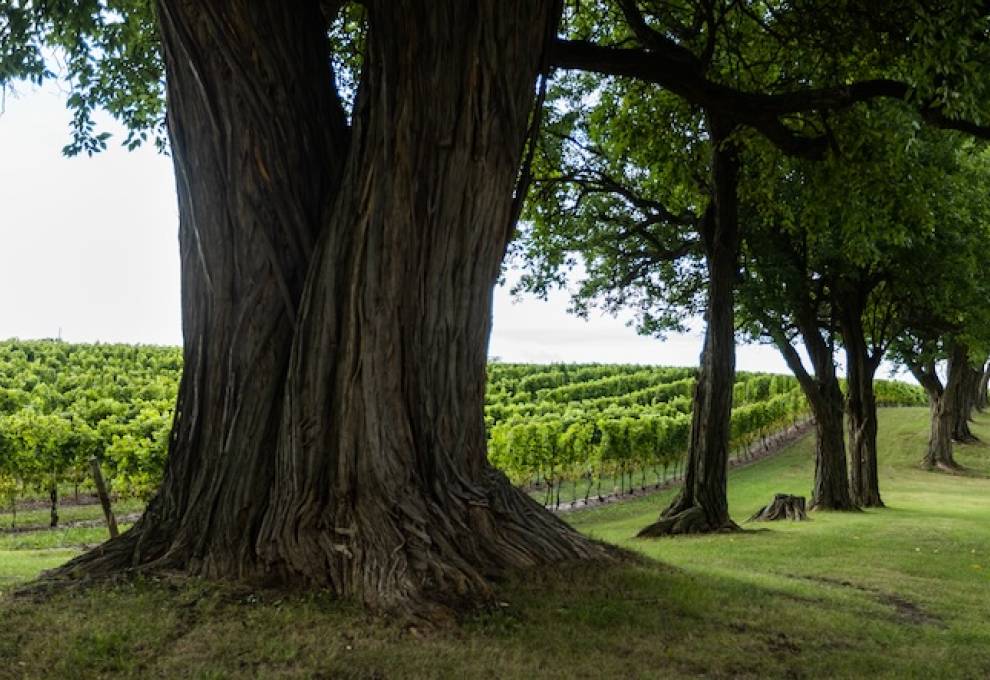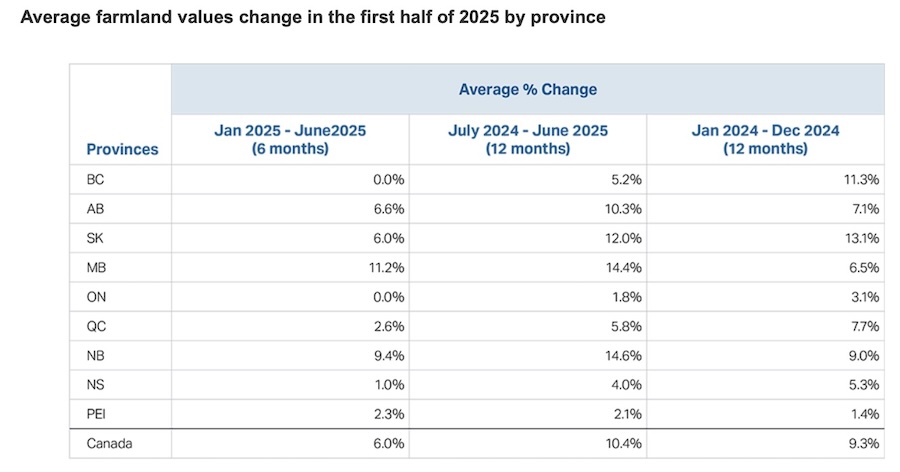
Canadian cultivated farmland values rose by an average of 6.0 per cent in the first half of 2025, according to the mid-year farmland values review by Farm Credit Canada (FCC).
This marks a modest acceleration compared to the first half of 2024, which saw a 5.5 per cent increase. Over the 12 months from July 2024 to June 2025, there was a 10.4 per cent increase, representing a slight increase compared to the previous 12-month period (January to December 2024) with a 9.3 per cent increase.
This growth reflects a complex mix of market forces and regional dynamics, with some provinces surging ahead while others remaining flat. Manitoba led the country with an 11.2 per cent increase, followed by New Brunswick (9.4 per cent) and Alberta (6.6 per cent). Saskatchewan matched the national average at 6.0 per cent, while Québec (2.6 per cent), Prince Edward Island (2.3 per cent), and Nova Scotia (1.0 per cent) posted modest gains. Ontario and British Columbia recorded no change, highlighting the uneven nature of the market.

“Demand for farmland remained strong in the first half of the year regardless of lower commodity prices,” said J.P. Gervais, FCC’s chief economist. “Buyers continued to invest, driven by long-term confidence in the agriculture sector and the limited supply of available land. While growth is uneven across provinces, the overall trend points to promising growth opportunities in agriculture.”
Despite notable gains in certain regions, over the past six months, the overall range of sale prices per acre has increased only modestly. Provinces that experienced strong growth in recent years are now seeing a softening in farmland prices, while regions with previously more modest increases continue to see solid gains. Overall, the market appears to be stabilizing.
Gervais noted that farm cash receipts fell 1.6 per cent in 2024, mainly due to a drop in grain and oilseed revenue, while livestock receipts rose. In early 2025, grain and oilseed receipts increased slightly, though results vary by crop and region. Looking forward, receipts for grains and oilseeds are expected to decline overall in 2025 by 6.0 per cent. Easing interest rates and healthy farm balance sheets should provide underlying support to farmland values. Yet the farm economy may reflect a more cautious environment in the second half of 2025 and 2026 when it comes to the demand for farmland.
“The interplay between interest rates, farm revenues and expenses, and constrained land availability will continue to shape the trajectory of farmland values,” Gervais added.
Source: Farm Credit Corporation October 2, 2025 news release

